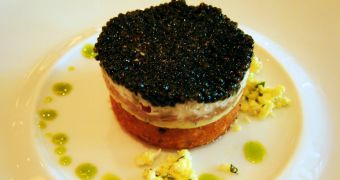A group of researchers believes that it is possible to make the caviar industry more animal-friendly than it currently is. They say that, according to their investigations into the matter at hand, obtaining no-kill caviar might be as simple as massaging the eggs out of fish.
Specialist Angela Köhler, who has been working on developing a sustainable and cruelty-free method of obtaining caviar for about nine years now, explains that, for the time being, sturgeons are more often than not killed and then butchered in order for workers to be able to get their hands on their eggs.
One other method employed by the caviar industry is performing C-section on female sturgeons, i.e. cutting them open, removing their eggs, and then sewing them back up again. However, this leaves the fish vulnerable to infections, and might even damage their reproductive organs.
According to Angela Köhler, this means that C-section caviar production can prove a bad idea on the long run, simply because said infections and medical complications might eventually reduce roe yields, NPR informs.
The same source tells us that no-kill caviar production is currently being trialed at a small farm in the municipality of Loxstedt in Germany. The method makes it possible to harvest sturgeon eggs without killing the fish, and even without cutting them open.
Researcher Angela Köhler details that, as part of this new method of obtaining caviar, specialists must first examine the eggs inside a female sturgeon's body by means of ultrasound. When the eggs are ready for harvest, the fish is injected with a protein said to induce labor.
More precisely, this injection causes the eggs to be released from a membranous sack in the belly cavity. Once this happens, a simple massage is argued to be enough to get the eggs out of the female sturgeon's body and onto your average Joe and Jane's plate.
In order to make sure that the fish eggs keep their texture and do not turn into mush when harvested into this manner, they must be rinsed in a water-calcium solution after being removed from the female sturgeon's body. This treatment makes them strong enough to withstand salting and curing, and also makes them more resistant to heat.
Angela Köhler maintains that, thanks to this method, which aims to make the caviar industry a tad more similar to the commercial production of eggs or milk, roe can be harvested from the same fish once every 15 months for several decades. This would make caviar both more abundant and more affordable.
“[The Vivace method] will make caviar production more financially reasonable. It doesn't make much sense to take a fish that needs seven or eight years to mature and then, when it has its first eggs, kill it,” the researcher told the press in a recent interview.
Last year, the small no-kill caviar farm in Loxstedt, Germany had an output of just 1,100 pounds. Hence the fact that, at the California Caviar Company in Saulito, California, an ounce (28.34 grams) of caviar harvested with the help of this cruelty-free method sells for $125-135 (€90.88-98.15). By comparison, regular caviar originating from the same species has a price tag of $105 (€76.34) an ounce.
However, both Deborah Keane, the owner of the California Caviar Company, and Angela Köhler and her colleagues believe that, should no-kill caviar become more popular than it currently is, prices would surely drop. In fact, they estimate that costs could be reduced by as much as $20-30 (€14.54-21.81) per ounce.

 14 DAY TRIAL //
14 DAY TRIAL //